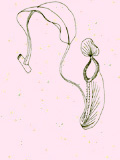

Editorial (pdf)
Ecologists have been slow to get involved in the H5N1 bird flu issue, despite rising public concern, preferring to leave the talking to virologists and public health experts. However, many of the currently unanswered questions are ecological, so we have a lot to contribute, and the virus has the potential for both direct and indirect conservation impacts, so we cannot just ignore it.
An ecologist reading the recent bird flu literature cannot help being struck by the ecological naivety that most articles display. This is often our own fault. The migratory "flyways", for example, have been great publicity for nature reserves, but, in Asia at least, are a crude simplification based largely on the movements of a few species of waterbirds. This did not matter much until virologists started to use flyway maps to prove (or disprove) the role of migratory birds in spreading bird flu. If we admitted our ignorance, perhaps someone would fund the studies that we need to fill in the gaps in our current knowledge? The truth is that, for the great majority of migratory species that visit Hong Kong, we know when they arrive and when they leave, but not where they come from or go to. The recapture rate of number-ringed birds is far too low for this to be an efficient way of learning about migration routes. Colour flagging has a much higher success rate and has revolutionized the study of wader movements. Could it be applied more widely? Satellite transmitters have so far only be used on the endangered Black-faced Spoonbill in Hong Kong, with stunning success, and should be tried on other large migrants, such as the Grey Heron and Great Cormorant (both of which are susceptible to H5N1).
On the conservation side, thousands of wild waterbirds have already died from H5N1 at various sites in East Asia, so an out-break in a rare species that is concentrated at a few sites – the black-faced spoonbill is an obvious example – is a realistic possibility. Equally, if not more, threatening is an overreaction by panicked officials, as shown by Vietnam’s reported attempts to eliminate all birds, wild and domestic, from urban areas.
A role for migratory waterbirds in spreading the H5N1 virus is likely but currently unproven. An alternative possibility is that the outbreaks in these birds are a result of transmission from poultry or resident wild birds after arrival. Indeed, the whole focus on waterbirds as the natural reservoir for this virus may prove a red herring. However, there is no doubt that migratory waterbird populations are a reservoir for a huge variety of flu viruses, as are the populations of the many migrant species that are not associated with water. Studies of their movements could thus contribute to both Science and public health.
P.2
|
Porcupine! |
 Copyright © 2000 |